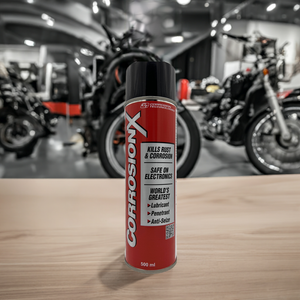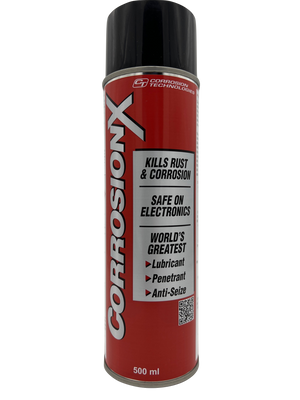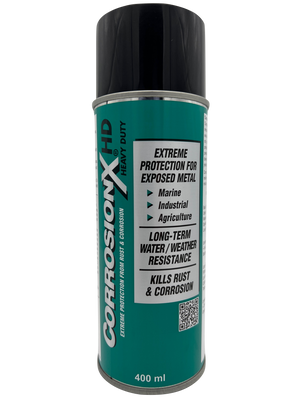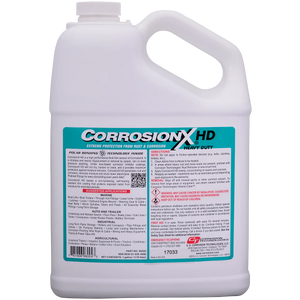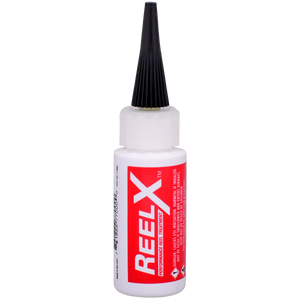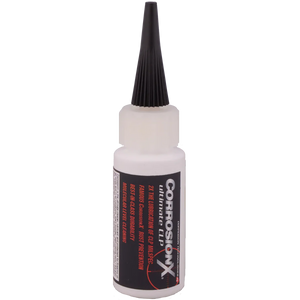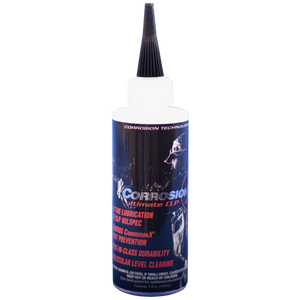Gun maintenance isn’t just about keeping your firearm in tip-top shape—it’s also about caring for the world around us. After all, every time you clean and oil your gun, you’re using chemical products that can find their way into our air, water, and soil. If the mere thought of toxic residues creeping into nature makes you cringe, you’re not alone. The growing conversation about environmentally conscious choices is prompting more and more gun owners to look for ways to protect both their firearms and the environment. In this extensive guide you’ll learn all about how gun oil affects the environment, why it matters, and how responsible practices can make a world of difference.
Understanding the Role of Gun Oil in Firearm Maintenance
Why Gun Oil Is Essential
If you’re a gun owner—whether you’re a seasoned sport shooter, a passionate hunter, or someone who relies on firearms for home defense—you know how crucial it is to keep your weapon well-maintained. A firearm is made up of multiple metal components, all of which can be vulnerable to moisture, dust, and friction. That’s where gun oil comes in.
- Rust Prevention: Metal parts can deteriorate over time when exposed to moisture. Gun oil coats these surfaces to provide a protective layer that helps ward off corrosive effects.
- Lubrication: Without lubrication, the moving parts of a firearm can grind against each other, causing wear and tear. A good gun oil ensures smooth operation and reduces friction.
- Heat Management: During firing, the metal parts experience a lot of heat. Lubricants help manage the temperature and prevent damage that could compromise the gun’s performance.
Think of it like getting regular oil changes for your car. You wouldn’t run your vehicle without motor oil—unless you wanted to risk engine failure. The same logic applies to your firearm: skip the oil, and you could be setting yourself up for malfunctions or safety hazards.
From Tradition to Innovation
Traditionally, many gun owners have used petroleum-based oils that might do the trick for lubrication but come with a baggage of chemicals. If you’ve ever wrinkled your nose at the strong smell of certain solvents or oils, that’s likely due to volatile organic compounds (VOCs). High VOC content not only smells harsh, but it can be harmful to inhale and damaging to the environment. Over the years, manufacturers have scrambled to improve their formulas—leading to lower-VOC or even VOC-free products, biodegradable mixtures, and more eco-friendly alternatives.
Still, not all gun oils are created equal. If you’re keen on choosing an option that balances top-tier performance with minimal environmental impact, you’ll need to do some research.
Environmental Concerns Surrounding Traditional Gun Oils
The Volatile Organic Compounds (VOC) Problem
If you’ve been around firearms for some time, you’ve probably heard the term “VOC” thrown around in discussions about paints, solvents, and lubricants. Volatile organic compounds are chemicals that evaporate at room temperature and can contribute to air pollution. When you apply gun oil to your firearm, these compounds can vaporize into the air, potentially harming your health and contributing to smog formation.
- Impact on Air Quality: VOCs react with nitrogen oxides in the presence of sunlight to form ground-level ozone, a major component of smog. This smog isn’t just an urban eyesore—it can lead to respiratory problems, particularly in children and the elderly.
- Indoor Air Pollution: Many gun owners clean and maintain their firearms indoors, in a workshop or garage. High-VOC products can negatively affect indoor air quality, leading to headaches, dizziness, or irritation.
- Long-Term Health Risks: Prolonged exposure to VOCs has been linked to certain health issues, including liver, kidney, or central nervous system damage (in extreme cases).
Toxic Residues and Water Contamination
Even if you’re a conscientious gun owner who cleans up diligently, there’s always a risk of accidental spills or leftover residues on cleaning rags and tools. Over time, these chemicals can end up:
- Leaching into Groundwater: If you toss oily rags into the trash, the chemicals can seep through landfills and eventually reach groundwater sources.
- Polluting Waterways: Washing equipment in a sink can funnel chemicals into local water treatment systems. These facilities may not always be equipped to fully remove certain chemicals, leading to water pollution.
- Affecting Aquatic Life: Toxic substances in water can harm fish and other aquatic organisms, disrupting local ecosystems.
Just imagine watching a line of dominos tip over one by one. A single drop of toxic oil might seem insignificant, but combined with countless others, it can trigger a massive chain reaction that ultimately affects wildlife, plants, and even our own water supplies.
The End-of-Life Dilemma
What happens when you’re done with a particular gun oil product or you have leftover oil that’s gone bad over time? Disposal is another area where environmental responsibility comes into play. Oils and solvents should be taken to hazardous waste facilities or disposed of according to local regulations—but how many people actually know (and follow) the rules?
- Improper Disposal: Throwing containers of oil into regular trash could lead to chemical leaks in the environment.
- Fire Hazards: Oily rags, in particular, can spontaneously combust if not stored correctly, posing a risk to you and your household.
- Persistent Pollutants: Some traditional oils contain chemicals that remain in the environment for years, continuously causing harm to soil and water.
All these factors underline the importance of making informed choices about the gun oil you use. It’s not just a matter of personal safety and firearm functionality—it’s about our collective responsibility to safeguard the planet.
CorrosionX for Guns: A Closer Look at an Eco-Friendly Alternative
When discussions arise about environmentally conscious gun maintenance, CorrosionX for Guns often comes up as a prime example of how innovation meets responsibility. Let’s take a deep dive into what makes this product stand out and why so many firearm enthusiasts and professionals have given it their seal of approval.
What Sets CorrosionX for Guns Apart
CorrosionX for Guns is specifically formulated to tackle common issues such as rust, corrosion, and lubrication failure—all while keeping an eye on environmental safety. The brand positions itself as an alternative to traditional high-VOC lubricants, promising:
- Low VOC Content: One of its strongest selling points is that it has minimal volatile organic compounds, making it safer for users and bystanders.
- Biodegradable Ingredients: The product is designed to break down more easily in the environment, reducing its long-term ecological footprint.
- Multi-Purpose Use: While it’s primarily touted for firearms, many users have found it useful for other metal parts, from fishing reels to boat engines. This versatility often means you can cut back on buying multiple chemical products—another plus for the environment.
Unlike some “green” products that compromise performance for the sake of eco-friendliness, CorrosionX for Guns claims to excel in both. It’s a bit like a well-trained athlete who’s also a champion of fair play—strong in performance, but without causing collateral damage.
Benefits of Low VOC Content
Ever felt your eyes sting or your head ache after a round of gun cleaning in a closed room? That’s likely due to the vapors from the oil or solvent you were using. High-VOC products can make the cleaning process an unpleasant chore, forcing you to step outside for fresh air or endure persistent fumes.
- Healthier Air Indoors: With fewer toxic fumes, there’s less risk of indoor air pollution. You can focus on the task at hand without worrying about headaches or respiratory irritation.
- Easier on the Environment: Lower VOC emissions mean fewer chemicals contributing to smog and ozone depletion at ground level.
- Regulatory Compliance: Many regions have started imposing strict limits on VOC levels in consumer products. Using a low-VOC or VOC-free product helps ensure you’re on the right side of environmental regulations.
Biodegradability and Safety Features
When you’re dealing with oils and solvents, the concept of biodegradability can’t be overstated. A biodegradable product is one that natural processes can break down more easily, reducing the long-term accumulation of harmful residues in ecosystems.
- Less Environmental Persistence: Biodegradable oils diminish faster in soil and water, resulting in lower risks of contamination.
- Reduced Toxicity for Wildlife: Non-biodegradable oils can wreak havoc on birds, fish, and other wildlife. An eco-friendly option mitigates these risks.
- User Safety: Products like CorrosionX for Guns generally have fewer irritating substances, making them safer to handle and breathe.
It’s a bit like choosing between a plastic grocery bag that stays in a landfill for centuries and a paper bag that decomposes within weeks. The difference can be monumental when multiplied by the millions of gun owners worldwide.
Best Practices for Environmentally Conscious Gun Maintenance
Safe Application Techniques
Even if you’re using a more eco-friendly gun oil, you can still minimize any negative impacts by using proper application techniques. Think of it like painting a house—you wouldn’t just splash paint everywhere; you’d use controlled, purposeful strokes. The same concept applies here:
- Use the Right Amount: More oil doesn’t necessarily mean better protection. Over-oiling can cause drips and potentially attract dust. Follow product guidelines for optimal application.
- Designate a Cleaning Area: Choose a well-ventilated space or use a ventilated booth if possible. This helps disperse any fumes, even if they’re minimal.
- Avoid Direct Contact: Wear gloves to protect your skin. While eco-friendly products are generally safer, prolonged exposure to any chemicals can irritate skin or cause allergies.
- Clean Up Promptly: Wipe off excess oil and store your cleaning tools properly. This prevents accidental drips or spills on floors, tables, or other surfaces.
Proper Disposal Methods
So you’ve finished cleaning your firearm—now what do you do with the oily rags, leftover lubricant, or empty containers? Responsible disposal is where you can really make a positive environmental impact.
- Read Local Regulations: Rules can vary widely depending on where you live. Some areas offer hazardous waste collection services specifically for oils and chemicals.
- Store Oily Rags Safely: Place them in a sealed metal container partially filled with water or a specialized safety can. This prevents the possibility of spontaneous combustion.
- Recycle If Possible: Some eco-friendly gun oils come in recyclable bottles. Rinse out any residue and recycle the container according to local guidelines.
- Never Dump Down the Drain: Even small quantities can cause big problems in water treatment plants and local waterways.
Storage and Long-Term Maintenance
Responsible gun maintenance also extends to how you store your firearm and its cleaning supplies. A well-organized storage approach reduces the likelihood of spills, accidental contamination, or confusion about what products you have on hand.
- Label Everything: Keep your oils, solvents, and cleaning agents clearly labeled to avoid mixing them up.
- Use Airtight Containers: Many gun oils and solvents come in sealed containers. Keep them tightly closed to prevent evaporation and to protect indoor air quality.
- Store in Cool, Dry Conditions: Heat can speed up the breakdown of chemicals and increase evaporation, while moisture can degrade the quality of your products and your gun.
- Check Expiration Dates: Yes, even oils and lubricants can degrade over time. Using old, compromised formulas may lead to poor performance or damage.
How to Choose the Right Gun Oil: Key Considerations
Making an informed choice can feel like a puzzle, with each piece—performance, price, brand reputation, environmental impact—playing a part. Here’s a roadmap to guide your decision:
-
Check the Ingredient List
Look for “low VOC” or “VOC-free” labels, and prioritize biodegradable formulas. If the product is secretive about its chemicals, consider that a red flag. -
Evaluate Performance Claims
Read user reviews, talk to other gun owners, or consult with a reputable gunsmith. While marketing can be persuasive, first-hand experiences often give the clearest picture. -
Consider Compatibility
Not all oils work equally well on all firearm types or finishes. Ensure the product you pick is compatible with your gun’s materials—steel, aluminum, polymer, wood, or otherwise. -
Take Note of Manufacturer Reputation
A well-known brand with a history of quality control is generally a safer bet. Look for companies that invest in research and development, demonstrate transparency, and back up their green claims. -
Price vs. Value
A cheaper oil might initially save you money, but if it fails to protect your firearm or poses health and environmental hazards, you’ll pay more in the long run. Weigh quality against cost to find the best balance. -
Packaging Matters
If you’re really aiming for minimal environmental impact, look into the product’s packaging. Is it recyclable or made from post-consumer materials? Small details add up.
Case Study: The Positive Impact of Eco-Friendly Gun Oils in Real-World Scenarios
Sometimes, numbers and anecdotes speak louder than theory. Let’s look at a hypothetical (yet realistic) scenario:
The Gun Club That Switched to Green Maintenance
Imagine a shooting range and gun club with a few hundred members. They run regular training sessions, weekend competitions, and even host courses for first-time shooters. For years, the club used a conventional petroleum-based oil, storing used rags in barrels at the back of the workshop. The sharp chemical smell often lingered around the building, and staff complained of headaches.
-
Before the Switch:
- Product: High-VOC petroleum-based oil.
- Complaints: Strong odors, frequent disposal costs for hazardous waste, and potential safety concerns due to rags saturating quickly.
- Environmental Impact: High levels of chemicals in the air, complicated hazardous waste disposal, and potential for spills.
-
After the Switch to CorrosionX for Guns:
- Reduced VOC Emissions: Staff noticed significantly fewer complaints about the smell, and the indoor environment felt fresher.
- Lower Disposal Costs: Because the oil was more biodegradable, disposal processes became simpler, with fewer barrels of hazardous waste piling up.
- Improved Gun Longevity: Club members reported that guns stayed cleaner for longer periods, requiring less frequent reapplication of oil.
- Member Satisfaction: Knowing they were doing their part for the environment boosted the club’s reputation. New members even cited environmental responsibility as a key factor in choosing this club.
Within six months, the club saw a notable decrease in their overall chemical waste. Over time, they saved money on hazardous waste disposal and even attracted sponsorships from eco-conscious companies interested in supporting responsible gun ownership practices. It was a win for the club, the environment, and the shooters.
Frequently Asked Questions (FAQ)
Q1: Is CorrosionX for Guns safe to use on all firearms?
A: Absolutely. It’s formulated to be compatible with a wide range of firearm materials. Whether you’re oiling up your vintage rifle or brand-new polymer handgun, CorrosionX for Guns provides reliable protection without harmful chemicals.
Q2: How does CorrosionX for Guns differ from other gun oils in terms of environmental friendliness?
A: The primary difference lies in its low VOC content and biodegradability. Traditional oils often contain higher levels of harmful chemicals that can linger in the environment or pose health risks. CorrosionX for Guns is specifically designed to minimize these hazards.
Q3: Can CorrosionX for Guns be used both outdoors and indoors?
A: Yes. Thanks to its reduced VOC emission and more pleasant odor profile, you can safely use it indoors with minimal ventilation. Of course, good airflow is always a best practice, but you won’t face the same strong fumes typical of heavier petroleum-based oils.
Q4: How often should CorrosionX for Guns be applied to a firearm?
A: The frequency depends on how frequently you shoot and the environmental conditions. For regular shooters, it’s wise to clean and re-lubricate after each shooting session. If your firearm sits in storage for extended periods, a monthly check (or at least quarterly) with a light reapplication is typically enough.
Q5: Can CorrosionX for Guns oil be used for purposes other than gun maintenance?
A: Yes, many users employ CorrosionX for Guns for lubricating and protecting fishing reels, boating equipment, and even tools around the workshop. If it’s metal and prone to rust, a bit of CorrosionX can help keep it in great shape.
Q6: What if I accidentally spill gun oil?
A: If it’s a significant spill, treat it like you would any other chemical spill—contain it, soak it up with absorbent materials, and follow local disposal guidelines. For smaller drips or splashes, wipe them up immediately and dispose of the rag responsibly.
Q7: Do I need special protective gear when using CorrosionX for Guns?
A: While it’s far safer than traditional high-VOC oils, wearing gloves and ensuring decent ventilation are still recommended practices for any chemical product.
Conclusion: Embracing Responsible Gun Maintenance for a Greener Future
Keeping your firearms in pristine condition is a point of pride for any gun owner. But it shouldn’t come at the expense of our planet’s health. With growing awareness about volatile organic compounds, toxic residues, and the persistent nature of chemicals, the conversation around eco-friendly gun oils has never been more pertinent.
CorrosionX for Guns represents one of the shining examples in this shift—offering high-level protection against rust and corrosion without piling on harmful VOCs or contributing to long-term environmental degradation. Think of it as upgrading your maintenance routine from a gas-guzzling car to a hybrid model; you still get the performance you need, but with a significantly reduced ecological footprint.
The Bigger Picture
Responsible gun maintenance goes beyond a single product. It’s about adopting best practices across the board:
- Storing and disposing of cleaning materials properly
- Maintaining a safe, well-ventilated workspace
- Staying informed about the latest developments in eco-friendly products
- Acting as an ambassador among fellow gun owners, spreading awareness of greener choices
If you’ve ever felt a twinge of guilt while tossing used oil-soaked rags in the trash or worried about the fumes in your workshop, it’s time to make a change. By pivoting to more sustainable products like CorrosionX for Guns and refining your maintenance approach, you’ll be doing your part to safeguard not just your firearms, but also the environment we all share.
A Personal Note to Gun Owners
The environmental conversation isn’t just for activists or policy-makers. It’s for anyone who shares this planet. As gun owners, we have a unique responsibility: our hobby or profession involves tools that require chemical maintenance. Let’s harness that responsibility and turn it into a positive force. Every time you clean your gun with a biodegradable, low-toxicity product, you’re effectively saying, “I care about my community and my environment.” It might sound lofty, but small actions do add up—especially in the shooting sports world, where millions of us engage in regular firearm upkeep.
Moving Forward with Confidence
So, next time you pop open your cleaning kit, take a moment to think:
- Are you using a product that aligns with your values?
- Could you reduce waste by applying less oil or storing it more efficiently?
- Have you checked local disposal rules to ensure your waste won’t harm the environment?
This mindful approach isn’t just about being cautious—it’s about being conscientious.
CorrosionX for Guns serves as a beacon of responsible innovation, reminding us that technology can evolve to meet our needs without jeopardizing our planet. By choosing a product that combines top-tier performance with environmental mindfulness, you’re contributing to a larger movement that prioritizes health, sustainability, and responsible firearm ownership.
Final Takeaway
Responsible gun maintenance is more than a mechanical chore; it’s a holistic practice that respects both your firearm and the world we live in. The next time you reach for a bottle of gun oil, remember that you’re not just oiling your gun—you’re making a statement about how you want to treat our shared environment. With low-VOC, biodegradable options like CorrosionX for Guns available, there’s never been a better time to elevate your maintenance routine to a greener standard.


